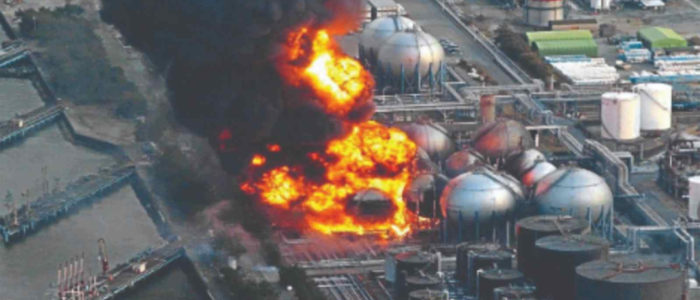The dawn of the nuclear age has brought acute prospects and numerous challenges to international peace and security. The concept of deterrence has considerably reduced the chances of an all-out total war. However, at the same time, it has also rendered the world a dangerous place when it comes to safety and security of nuclear power plants. According to the International Atomic Energy Agency (IAEA), the radiation accident or radiation incident is defined as an event that leads to significant consequences for the people, the environment, or the facility.
Out of three major accidents, the Fukushima accident occurred on the face of earth. In 2011, Japan was hit by an earthquake of 9.2 magnitude on the Richter scale along with tsunami that created havoc all across the east of Japan. Following the earthquake, a 15-meter tsunami disabled the power supply and cooling of three Fukushima Daiichi reactors, causing a nuclear accident. All three cores largely melted in first three days. Moreover, according to the International Nuclear and Radiological Event Scale (INES), the Fukushima accident was rated at the scale of 7 which is considered a major accident. The three reactors cooled down over a year or so. It was done by addition of recycled water from the other treatment plant.
Huge amount of radioactive materials adversely effected the environment of Japan. Environmental monitoring desk was established with research institutions all over the world. This monitoring desk gave a report that contaminated areas within 50 kilometers of the accident. The radioactive waves reached a maximum 10.85 mSv/h, which is 38,000 times greater than the normal radiations. Soil survey was conducted by Japan and radioactive isotopes like Strontium-90 and Caesium-137 were found, which are well-known for causing damage to tissues.
In 2011, Japan was hit by an earthquake of 9.2 magnitude on the Richter scale along with tsunami that created havoc all across the east of Japan.
Samples of vegetables and milk tested after one week of radiations revealed levels of elements I-131 and Cs-137 exceeding the normal. Around 8,300 people were deployed in the rescue and clean-up operation and around 111 workers got radiation exposition over 100 mSv/h. United Nations Scientific Committee on the Effects of Atomic Radiations presented its report to the United Nations General Assembly in 2013 stating that 25,000 workers in the first 19 months of the accident were exposed to radiations. However, the report also states that no deaths or diseases were observed which could be described as radiation related.
Quite recently, Japan presented a report to the IAEA which apprises of the discharging records and seawater monitoring results from the site of the accident. The report also talks about the discharge of radioactive waste from draining systems. Results confirm that radiations level from the tested water is below the targets set by the Tokyo Electric Power Company (TEPCO). Above all, the report submitted to the IAEA and the latter’s response is quite positive on the initiatives being taken by Japan’s government.
On the other hand, the reports are also coming which depict that Japan is facing serious issues on the site of accident. Reuters reported that Japan is cleaning up the site but the cost is increasing to several billion dollars. According to an estimate, 300 tons of radioactive water is still pouring into the Pacific Ocean every day for which Japan is using the Robotics technology, but they are destroyed due to high levels of radiations.
As per the reports of the TEPCO, the radiations levels in 2012 were 73 Sv/h, so, Japan designed the robotic cameras to sustain the radiations levels, even those robots then got crashed due to overwhelming impacts of the radiations.
The policy implications for nuclear sustainability revolve around three domains: the Reformation of Nuclear Regulatory Authority and System which talks about creating and upgrading the regulatory mechanism, the Initiation of Nuclear Energy Policy Discussion which started new academic debates revolving around energy policy and the International Collaboration for Future Prospects to avoid further accident by sharing the technology.
Speaking in terms of energy policy of Japan, it is based on: the Energy Security because Japan has scarce natural resources, the Economic Efficiency so as to maximise its resources with efficiency, and the Environmental Preservation to limit carbon emissions and work for the betterment through environmental frameworks and agreements.
It came up with six strategies to prevent the same kind of accident if it ever happens, which are as follows:
- Exit strategy for nuclear power plants.
- Learning from the accident.
- To re-establish nuclear power safety administration with more robust systems.
- For changing nuclear power as well as the nuclear energy policy.
- The urgent energy investments to overcome energy shortages as scarce resource country.
- The low carbon emission society and climate change.
The world has seen the worst nuclear accident in Fukushima. Its adverse effects on environment of Japan as well as surrounding areas and region still pose a serious threat to human security. Japan has already learnt lessons the hard way and is now upgrading the nuclear infrastructure which would further enhance the safety of the nuclear power plants as per the IAEA standards. Japan is an important contributor towards the Kyoto Protocol and Climate Change but much is to be done to contain the radioactivity levels since the accident.
